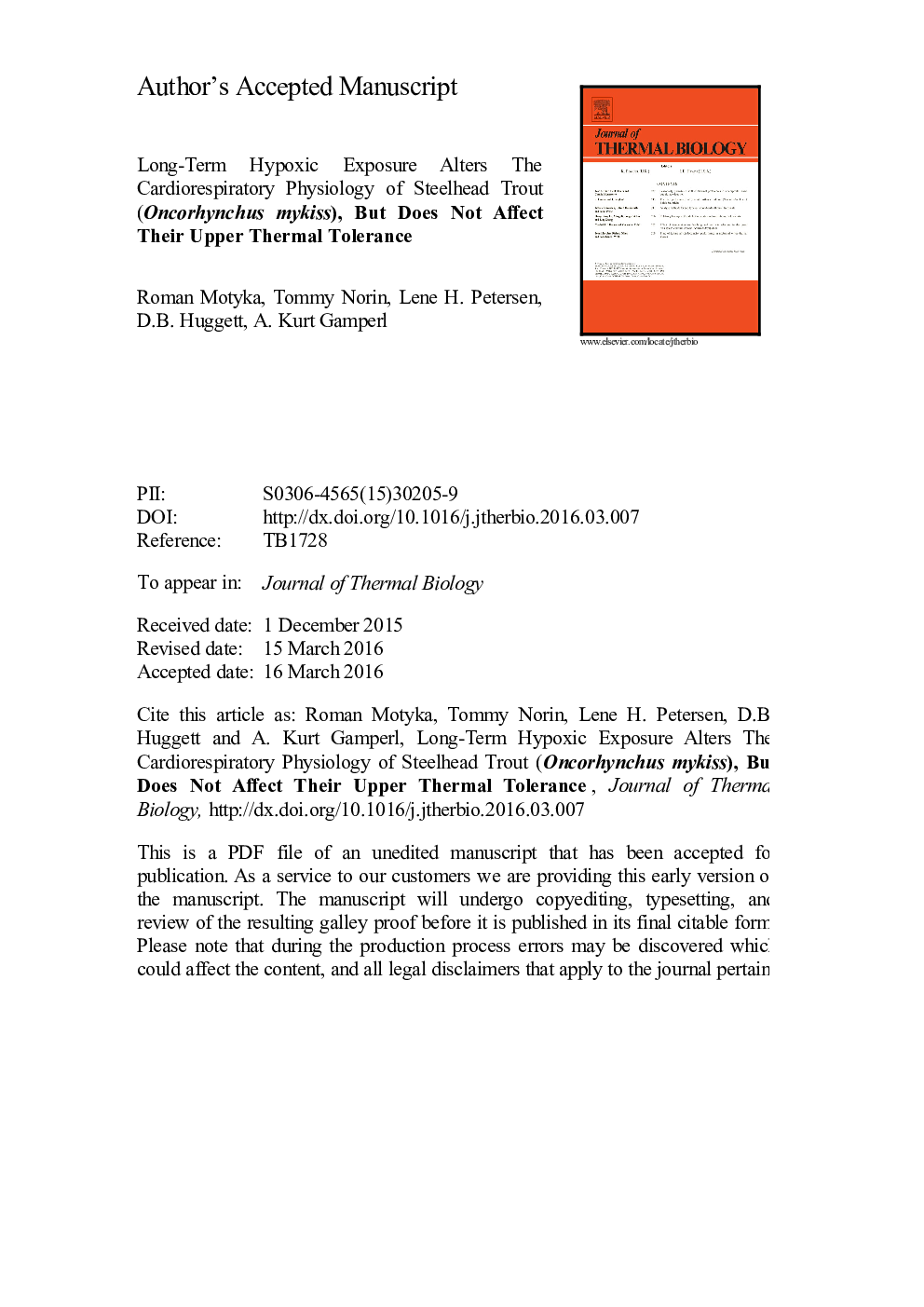| کد مقاله | کد نشریه | سال انتشار | مقاله انگلیسی | نسخه تمام متن |
|---|---|---|---|---|
| 5593379 | 1405079 | 2017 | 62 صفحه PDF | دانلود رایگان |
عنوان انگلیسی مقاله ISI
Long-term hypoxia exposure alters the cardiorespiratory physiology of steelhead trout (Oncorhynchus mykiss), but does not affect their upper thermal tolerance
دانلود مقاله + سفارش ترجمه
دانلود مقاله ISI انگلیسی
رایگان برای ایرانیان
کلمات کلیدی
موضوعات مرتبط
علوم زیستی و بیوفناوری
علوم کشاورزی و بیولوژیک
علوم کشاورزی و بیولوژیک (عمومی)
پیش نمایش صفحه اول مقاله

چکیده انگلیسی
It has been suggested that exposure to high temperature or hypoxia may confer tolerance to the other oxygen-limited stressor (i.e., 'cross-tolerance'). Thus, we investigated if chronic hypoxia-acclimation (>3 months at 40% air saturation) improved the steelhead trout's critical thermal maximum (CTMax), or affected key physiological variables that could impact upper thermal tolerance. Neither CTMax (24.7 vs. 25.3 °C) itself, nor oxygen consumption (MÌO2), haematocrit, blood haemoglobin concentration, or heart rate differed between hypoxia- and normoxia-acclimated trout when acutely warmed. However, the cardiac output (QÌ) of hypoxia-acclimated fish plateaued earlier compared to normoxia-acclimated fish due to an inability to maintain stroke volume (SV), and this resulted in a ~50% lower maximum QÌ. Despite this reduced maximum cardiac function, hypoxia-acclimated trout were able to consume more O2 per volume of blood pumped as evidenced by the equivalent MÌO2. These results provide additional evidence that long-term hypoxia improves tissue oxygen utilization, and that this compensates for diminished cardiac pumping capacity. The limited SV in hypoxia-acclimated trout in vivo was not associated with changes in cardiac morphology or in vitro maximum SV, but the affinity and density of myocardial Ã-adrenoreceptors were lower and higher, respectively, than in normoxia-acclimated fish. These data suggest that alterations in ventricular filling dynamics or myocardial contractility constrain cardiac function in hypoxia-acclimated fish at high temperatures. Our results do not support (1) 'cross-tolerance' between high temperature and hypoxia when hypoxia is chronic, or (2) that cardiac function is always the determinant of temperature-induced changes in fish MÌO2, and thus thermal tolerance, as suggested by the oxygen- and capacity-limited thermal tolerance (OCLTT) theory.
ناشر
Database: Elsevier - ScienceDirect (ساینس دایرکت)
Journal: Journal of Thermal Biology - Volume 68, Part B, August 2017, Pages 149-161
Journal: Journal of Thermal Biology - Volume 68, Part B, August 2017, Pages 149-161
نویسندگان
Roman Motyka, Tommy Norin, Lene H. Petersen, Duane B. Huggett, A. Kurt Gamperl,